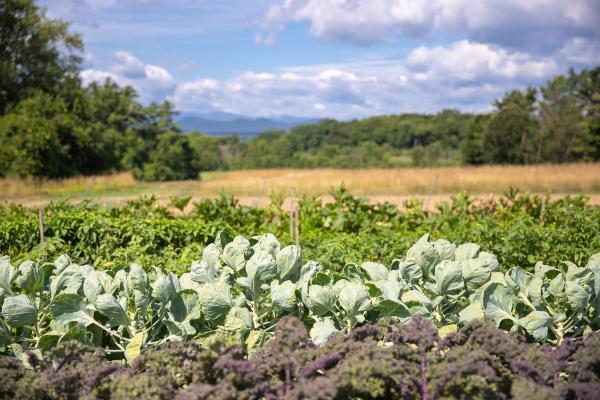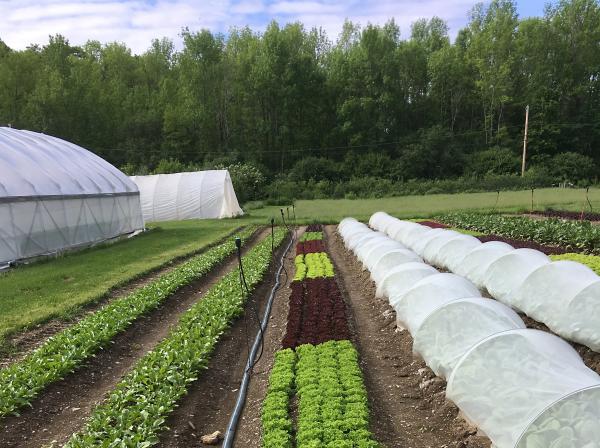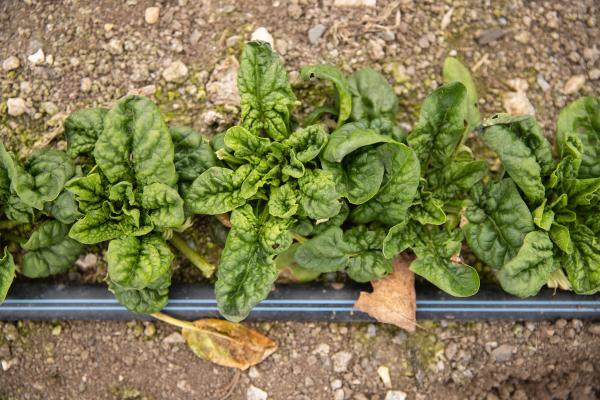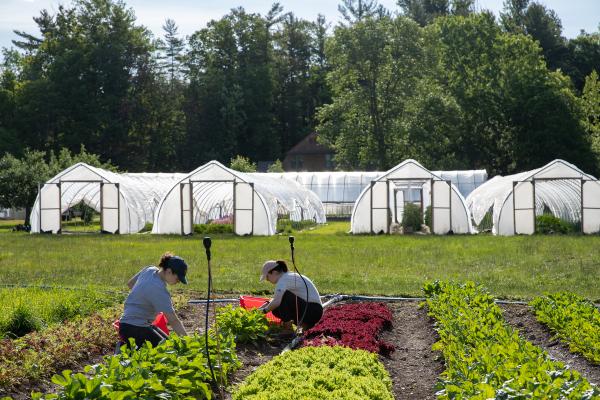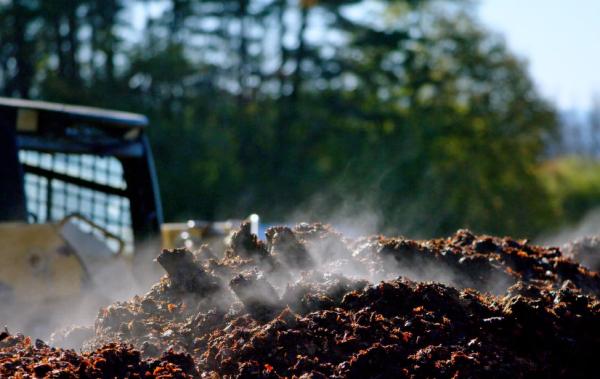This is inspiring, thank you.
Farming in a Changing Climate
If you were farming in Shelburne, Vermont 70 years ago, you would probably have been able to seed carrots, then depend on a rainstorm every three days and a high in July of 85℉ and maybe a week-long drought—all to bring those carrots to harvest. (This is speculation, but it’s backed up by anecdotal evidence and climate data.) Farming had its challenges back then, but climate wasn't necessarily the top one.
It is now. And it’s changing how we farm.
To meet my yields as a farmer and respond to climate change, there are basically two strategies. First, I could grow more acres of vegetables (we grow about three acres of crops in the Market Garden right now), knowing that my yield per square foot would likely drop due to climate impacts. These include drought, heavy rain events, increased disease, and pest pressure—generally speaking, increased plant stress.
The other approach, and the one we’re focusing on, is this: We’re dialing in our practices to manage the micro-environment around the plants. Then we build resilience in the whole system through soil health. It’s a lot of work. But then, farming always is.
Here are a few practices we’ve adopted in response to a changing climate:
COVERING CROPS
Protecting crops—especially young plants—from temperature fluctuations and pests is fundamental to farming. But now I constantly worry about heat stress in particular. I used to cover a lot of crops, like winter squash, with a synthetic garden fabric, which creates a nice microclimate for young plants and helps protect them from insect damage. Now it gets too hot under the covers in June, July, and August. A few years ago, we invested in insect netting instead. It’s like a fancy screen that basically achieves the same result as row cover without creating excess heat stress, but it’s expensive.
We’ve also invested in shade cloth. Anything that doesn't like full sun and 90ºF temperatures in July (which is really just tomatoes and sweet potatoes), needs it now. Even heat-loving peppers and eggplant will abort their flowers in prolonged high temperatures, so while they're flowering, we keep an eye on the weather and cover them if we need to. Shade cloth also helps us continue to grow lettuce in the middle of the summer.
IRRIGATION
For basically two months in the summer, we cannot rely on rain. So we irrigate not once a week, but once—sometimes twice—a day on the same field, because between irrigating in the morning and in the late afternoon, that field might become scorched earth from high heat. Irrigating crops temporarily delivers water for the plants immediate needs. However, it's not really recharging all the water that the sponge-like soil can hold, the kind of hydration where the plant can just hang out for a few days and be okay. Only a good, steady rain can do that.
TUNNELS
Tunnels are another micromanagement tool. Using these unheated greenhouse-like structures, We can be much more precise in timing the planting, fertilizing, and irrigation of crops. (As a bonus, this also leads to less food waste, since we can more accurately grow what the kitchen needs.)
These three climate-responsive adaptations are built on a fundamental of regenerative agriculture: caring for soil health through cover cropping, crop rotation, minimum tillage, and composting. Together, these practices also help maximize the carbon storage of our soils and increase the climate resiliency of our farm.
Crop rotation, in particular, has become vital. (That means switching up the type of crop you grow on any given field each year.) The changing climate places more stress on plants, and stressed plants are more vulnerable to diseases and pests; proper crop rotation helps disrupt the progression of both, keeping our plants healthier.
Compost, too, plays an important role on a climate resilient farm (and any farm). In dry spells, more organic matter gives the soil a lot more water-holding capacity. And on the flip side, if we get a torrential three-inch rain, which is more common now, organic matter can soak it up. We just have to be thoughtful and conscious of the way we manage our compost to control runoff.
Down the road, I’m interested in other ideas for climate resilient farming. We could be more intentional about using permaculture design to focus on the garden as its own ecosystem, for example, possibly incorporating more shade trees. I’d also love to invest in a heat pump system supported by solar panels to heat the greenhouse, which is currently heated with propane. Then we might look at transitioning our fleet of vehicles from gas and diesel to electric.
"Perhaps my greatest impact on climate change isn’t in how I farm, but in how this land invites people into conversations about farming."
But at the end of the day, while we’re always trying to do better, we aren’t focused on fancy fixes to climate change. Perhaps my greatest impact on climate change isn’t in how I farm, but in how this land invites people into conversations about farming, and into asking questions about where food comes from, and how your food choices impact climate. As much as I want to grow a bunch of beautiful beets, it's not going to solve the problems the planet is facing. But when people can come here and see, smell, and pick the beets, then we're really making connections. And there’s potential for conversation—and change.
Comments
Thought-provoking both technically and philosophically. Good work, all of it.
Thank you, Josh, for connecting with and loving the Earth in such a way that you can show how much the Earth nourishes our minds and bodies, if only we take time to fully appreciate the workings of its fertile soil, from which all our life-sustaining sources of foods come from. You have restored the Market Garden in so many ways to reflect its original prominence; and adding to it a new gardening legacy that will continue to make it flourish throughout the century.
Sincerely,
JPM.
Very informative article. Thank you for posting!

